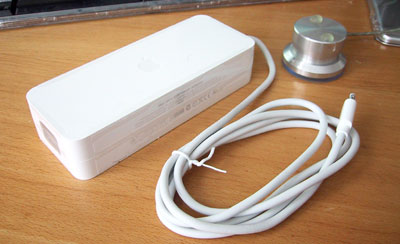
One should probably assume a 90% efficiency figure in the AC-to-DC conversion chain from 230V wall to 28V USB-C MagSafe to whatever the internal PMIC usage voltage of the device is.

The AC wall power under idle was 7.2W, this was on Apple’s included 140W charger, and while the laptop was on minimum display brightness – it’s likely the actual DC battery power under this scenario is much lower, but lacking the ability to measure this, it’s the second-best thing we have. This is extremely low compared to competitor designs, and is likely a reason Apple is able achieve such fantastic battery life.

Starting off with device idle, the chip reports a package power of around 200mW when doing nothing but idling on a static screen. Of course, there’s still an actual average power draw figure when under different scenarios, which is what we come to test here: As long as temperature is kept in check, the silicon will not throttle or not limit itself in terms of power draw. We repeat the exercise here for the 16” MacBook Pro, focusing on chip package power, as well as AC active wall power, meaning device load power, minus idle power.Īpple doesn’t advertise any TDP for the chips of the devices – it’s our understanding that simply doesn’t exist, and the only limitation to the power draw of the chips and laptops are simply thermals. Since then, we learned how to read out Apple’s individual CPU, GPU, NPU and memory controller power figures, as well as total advertised package power. Last year when we reviewed the M1 inside the Mac mini, we did some rough power measurements based on the wall-power of the machine. The solution was about as simple and cheap as you can get.Power Behaviour: No Real TDP, but Wide Range I wanted to know why it become loose, and how could it be fixed! I also did not want to buy a new motherboard or power supply. The only solutions that I found on the Internet were about replacing the motherboard, replacing the power supply, taking it to the Genius Bar, etc.īut I wanted to understand what the failure mode of this looseness was.

Apparently some of the Time Capsule units have this power supply and the problem of loose power connector cables too, but I was not able to verify that. You can see in the second picture how the connector would sort of bend down and fall out.Ī search of the Internet revealed that there are a lot of people who have this same problem, even with brand new Mac Minis and Mac Mini Servers. When you plug the power connector into the back of the Mac Mini, it would angle down and not grab on tight to the inner connector contacts. Upon closer inspection, the cause was that the power cable's connection into the power jack on the back of the Mac Mini had become very sloppy and loose, and would fall out of the Mac Mini was disturbed in any way. Our little Mac Mini started turning off whenever we would move it or bump it at all.


 0 kommentar(er)
0 kommentar(er)
